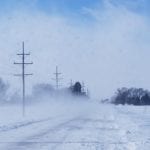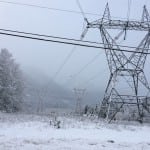California and Texas—two regions where summer reliability concerns were forecast earlier this year—are suffering extreme temperatures and are scrambling to relieve stress on the grid.
The California Independent System Operator (CAISO)—the grid operator that serves about 80% of California—on July 24 and 25 issued statewide Flex Alerts, calling for voluntary electricity conservation during peak afternoon and evening hours.
The Flex Alerts stem from high temperatures across the western U.S., reduced electricity imports, tight natural gas supplies in the Southern California area, and a high wildfire risk. “Consumers can help avoid power interruptions by turning off all unnecessary lights, using major appliances before 5 p.m. and after 9 p.m., and setting air conditioners to 78 degrees or higher,” the grid operator urged. “The ISO has called on all available resources to serve demand, however, conservation is needed to reduce the risk of further emergency measures, including rotating power outages.”
At the Electric Reliability Council of Texas (ERCOT), the entity that manages the flow of power for 90% of Texas’s electric load, a new record for all-time system-wide peak demand was set during two hours in the afternoon on July 19. The demand record topped out at 73,259 MW. It was the first time peak demand exceeded 73,000 MW in the region, ERCOT noted.
In a statement to POWER on July 19, ERCOT said “extreme heat across the state” was largely to blame for the record numbers, which had for the third time that week beat the old system-wide record set in August 2016. “We fully expect to keep hitting new demand records as summer 2018 continues,” it noted.
“Everyone in the ERCOT market—from our operators to generators to transmission providers to retailers—is doing what they can to keep the power on for consumers,” it said.
ERCOT set a new all-time system-wide peak demand record two hours in a row this afternoon, topping out at 73,259 MW between 4 and 5 p.m. This is the first time ERCOT peak demand has exceeded 73,000 MW in the ERCOT region. View actual loads: https://t.co/PsQRlROs1l pic.twitter.com/oAhqugZIRV
— ERCOT (@ERCOT_ISO) July 19, 2018
The Federal Energy Regulatory Commission (FERC) and the North American Electric Reliability Corp. expressed reliability concerns for the two regions as the summer began. The entities noted that the National Oceanic and Atmospheric Administration projected higher temperatures than average for most of the country, especially in New England and along a band running from West Texas through the Pacific Northwest.
Concerns are rooted in sizable retirements of baseload generation, especially in ERCOT. ERCOT retired 4.5 GW of coal capacity in January and February 2018 alone. In late 2017, it also retired 806 MW of gas-fired capacity and suffered a delay in construction of new resources totaling about 2.1 GW.
CAISO, meanwhile, warned in its 2018 Summer Loads and Resources Assessment that it could experience tighter supply conditions if high-load and below-average hydroelectricity production conditions occur. For now, CAISO is banking on demand response and consumer conservation to alleviate possible tight supply conditions.
Southern California, in particular, expects lower-than-average hydropower generation, owing to well-below-normal snowpack and a faster melt, FERC staff noted. This may “create challenges” as natural gas–fired generation—which has replaced hydro shortfalls in past years—may be limited due to distribution level pipeline outages that may affect both gas supplied to power plants and movement of gas into storage. “Limited operations at Aliso Canyon natural gas storage facility, plus state rule changes reducing the rate at which natural gas may be injected and withdrawn from storage, may complicate pipeline operations,” staff added.
—Sonal Patel is a POWER associate editor (@sonalcpatel, @POWERmagazine)









